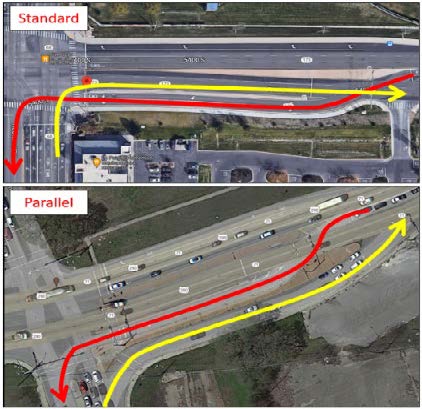North Carolina is considered a progressive state in terms of alternative intersection implementation. The service life of many roadways has been extended because the profession is willing to push the envelope of traditional intersection and interchange designs to consider alternatives – alternatives that in many cases extend the service life without the need for costlier designs.
This research follows prior research in the unconventional intersection/interchange domain, which has helped bolster the use of promising alternatives that look at possible safety and operational benefits. Specifically, this project helps build on the current knowledgebase of continuous flow intersections (CFIs) by answering “Are these intersections a safe unconventional design form compared to other design alternatives?"
An Empirical Bayes study was conducted on 16 typical CFIs. Overall, CFIs were found to significantly reduce total crashes by 12.2%. The most significant feature impacting safety at CFIs was the use of parallel vs. standard right turns, with parallel right turns having significant safety benefits (29.6% reduction) across the board and standard right turns increasing crashes (15.6% increase) in nearly all categories.

Example Right Turn Treatments at CFIs
Looking only at sites with parallel right turns, skewed intersections showed significant reductions (29.4% and 30.1% reductions for both no-skew and skew, respectively); however, the findings for the no-skew condition for crash severity and type were better overall. Area type was not found to increase crashes; however, rural locations were significantly safer overall compared to urban/suburban designs (40.3% vs. 26.0% reduction).
Although both site types were safe, 4-legged sites provide the best overall results for all crash category types and 3-legged sites were only significant in one of the categories. Last, although the increase crashes in either category, 2-lane crossovers were the only one that was found to significantly decrease crashes (34.9% reduction).
